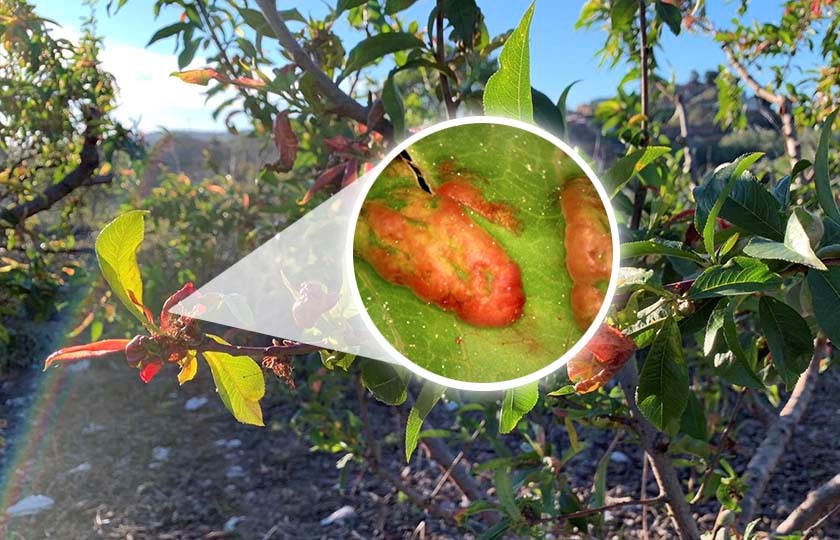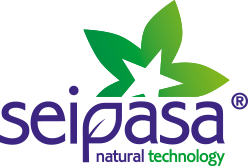Treatments for peach leaf curl: when is the right time and why?

Peach leaf curl is one of the most widespread diseases among fruit trees.
Spring has come around again and with it the upper face of leaves may start to show signs of distortion. Leaf puckering and changes in colour to yellow or bright red due to loss of chlorophyll is an obvious symptom of peach leaf curl (Taphrina deformans is its scientific name). This is a disease that is widespread in fruit trees but for which highly effective solutions are available, as long as they are applied in advance in the form of preventive treatments. Septum is a biofungicide developed by Seipasa to treat peach leaf curl, which provides a targeted preventive and curative effect on trees.
Peach leaf curl is caused by a parasitic fungus that can survive throughout the winter months on the surface of the tree. It remains latent until Spring and when the weather conditions are favourable it germinates again on new shoots and infects them. The fungus actually hibernates on stems, bark, or bud scales and then, in spring, the rain or wind help spread the spores to newly sprouted leaves. What happens next is that a full-on attack of leaf curl is triggered.
Taphrina deformans not only affects peach trees but also other fruit trees such as the nectarine, flat peach and, to a less extent, the almond. The conditions that encourage the development of this parasitic fungus are mild temperatures and high relative humidity, which tend to coincide with the spring and hence, with the period of bud burst.
If the weather is particularly cold and rainy during spring this can speed up progress of the disease. In contrast, high temperatures, high solar radiation, and low relative humidity can stop the disease from developing. Peach leaf curl disappears in summer, but it is important to point out that the spores are able to survive these hot conditions and remain on the affected tree from one year to another.
The most visible damage occurs on leaves, with puckering, distortion, and a characteristic change in colour which, at advanced stages of the infestation, is accompanied by a mealy powder that causes the leaves to fall off the tree. Defoliation of the tree weakens the formation of new buds, reduces fruit set, and affects its vigour. In practical terms, the damage caused by an attack of peach leaf curl significantly affects crop yields.
Fungicides for peach leaf curl
Treatments to combat peach leaf curl require taking early action. Damage can be minimised provided that actions to control the disease are taken at the right time. An infection of Taphrina deformans occurs in two stages on plants: a parasitic or active phase and a latent phase. Thus, although the attack is visible during bud burst, preventive treatment should be started at the end of winter, coinciding with the latent phase prior to the development of the first shoots.
For preventive actions, Seipasa has developed Septum, a fungicide of botanical origin based on Equisetum extract, in which the key molecules are isolated in a balanced proportion to guarantee maximum efficacy.
Thanks to its phenol, flavonoid, saponin and silicic acid contents, Septum has a preventive action, providing plant cells with structural stability and the mechanical strength to combat the propagation of fungi as well as triggering a physiological defence response in the plant against the action of the pathogen.
Septum also has a curative action for the control of peach leaf curl. When the first symptoms of the disease appear, the product acts immediately by contact. In addition, Septum, does not leave any residues on crops and is compatible with organic production strategies, integrated pest management and conventional agriculture.
Along with the use of fungicides for peach leaf curl, Seipasa's range of solutions includes treatments aimed at strengthening trees. Along these lines, Radisei root biostimulant helps to strengthen the tree in general and allowing it to take maximum advantage of nutrients, reducing the impact caused by the disease.
There are also other highly recommendable preventive treatments that can be applied to combat peach leaf curl. One such measure is to collect all fallen leaves and any damaged parts after pruning. They must then be destroyed to reduce the risk of possible infections.

